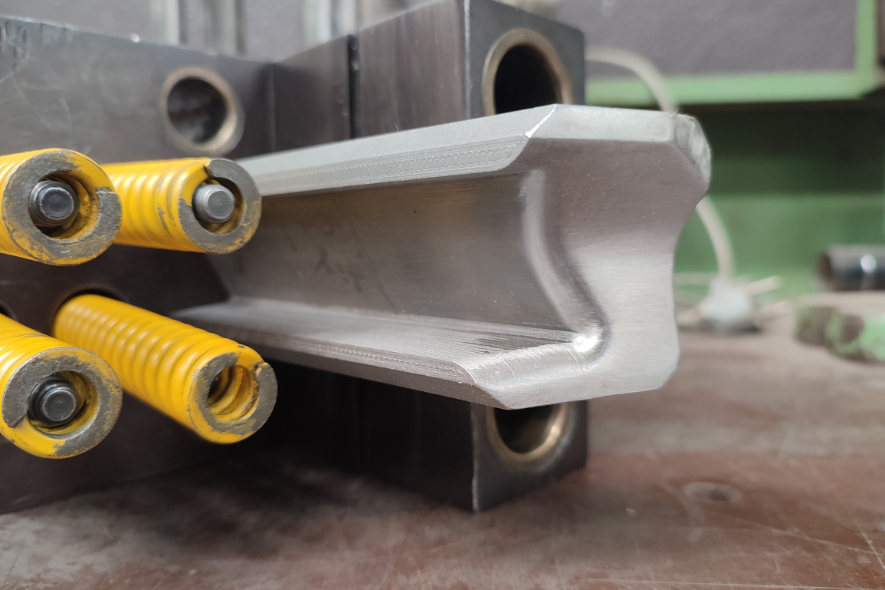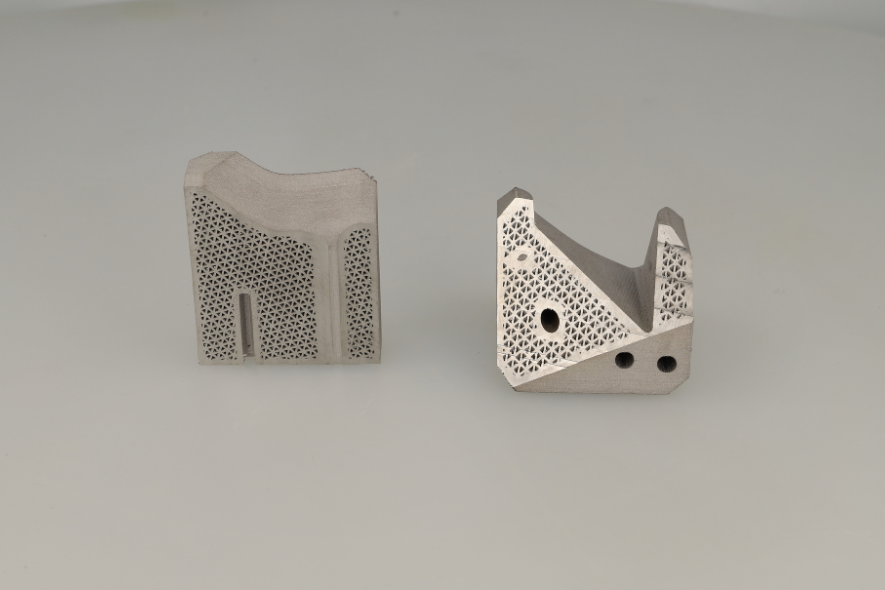
As Additive Manufacturing continues to grow and expand, numerous industries are embracing the technology along with the innovative materials and methodology used to produce accurate and high-quality parts for industrial production support through 3D printing. This enables companies to create or access new design strategies for optimized parts that can result in a streamlined production process, enhanced worker safety, increased durability in machine functions while also remaining cost-effective and performance oriented.
Those who have spent time working on a factory floor know that jigs, and fixtures, along with other special tools, are a necessity to the manufacturing and assembly process of products ranging from cars to industrial parts and equipment. As individuals and companies look for an easier and faster way to develop customized jigs and fixtures, 3D printing has become the most reliable process to scale and evolve their manufacturing processes.
Meeting and Exceeding Expectations – Overcoming the challenges of traditional manufacturing
There are several challenges companies face when it comes to the traditional manufacturing of jigs and fixtures. First, they can be time and cost consuming, meaning the creation and iteration required to produce a jig or fixture using traditional techniques can be lengthy, depending on the complexity of the design as well as the resources available.

3D printed tooling by WKW.automotive. Image courtesy of WKW.automotive.
Secondly, traditional machining techniques require a significant investment in both time and resources to develop and maintain the necessary tooling, leading to increased costs. Additional challenges can also include: Limited to no in-house tooling or production capabilities, Supply chain or outsourcing issues, Inability of traditional machining to produce complex designs with intricate shapes and features, Inconsistent machining accuracy which can impact part quality and cost. It can also take weeks or months to design, test, redesign, and machine a new jig or fixture which is both inefficient and can then lead to higher costs and delayed production lines.
Today, the speed and accuracy that can be achieved through Additive Manufacturing has changed all that. Industries around the globe are benefitting from the utilization of 3D printed jigs and fixtures which can result in:
- Reduced costs through less material waste as compared to milling
- Reduced outsourcing costs as parts can be produced in-house and on-demand with a high level of accuracy
- Reduction of the number of parts needed for jigs and fixtures, as complex components can be produced in a single piece leading to a more cost effective and easier to assemble part
- Decrease in lead time required for part production
- Improved performance with multi-material jigs and fixtures through a combination of rigid and soft materials which are used to avoid scratching
- Potential reduction in weight as 3D printed parts can be lighter than solid metal resulting in better ergonomics
- Quick turn-around for implementing precise design changes when compared to traditional manufacturing saving both time and money
- Ability to keep a digital inventory by producing parts on demand
- High quality parts produced with smooth surfaces and no burrs or flaws, leading to a better finish and longer-lasting parts compared to traditional manufacturing

A gripper 3D printed by WKW.automotive. Image courtesy of WKW.automotive.
Finding the right materials for the job: Rigid vs. Flexible
So, what are the benefits in using rigid materials? After partnering with a company to determine the best design for a part, Forward AM will also make an expert recommendation regarding the material best suited for the jig or fixture. Their Rigid Ultracur3D® RG reactive urethane photopolymers have the highest flexural modulus of the Ultracur3D® range and the highest heat stability. They are specifically engineered to deliver class-leading tensile strength and rigidity, as well as high print accuracy with low shrinkage while ensuring the long-term UV stability of printed parts.

A tool 3D printed by WKW.automotive. Image courtesy of WKW.automotive.
Our product range of Ultrafuse® offers applications for direct-driven extrusion systems through Fused Filament Fabrication (FFF). Forward AM offers a wide range of materials ensuring customers access to a variety of beneficial material properties such as ease of print, dimensional stability, durability, and flexibility. Whether its standard filaments, filaments for high temperatures and engineering or filaments for temporary support material, it can be found in our extensive portfolio.
| Application Fields for Rigid Materials | Use Case/ Material | Unique Value Proposition |
| Vehicle Plastic Body Work Repair | PlastiPUSH Hand Spikes | · Provides increased functionality at a lower cost than traditional filler therefore less time is needed. · These highly impact-resistant, thermally stable Fused Filament Fabrication (FFF) materials not only enable Plastfix to print and test different tool designs in a cost-effective way, but also to produce the definitive hand spikes quickly in small batch runs. · Material offers the highest level of printing consistency. |
| Production Tools | Fixtures for Danish Design Faucets – Vola | · Enables in-house production. · Can be manufactured at a fraction of the previous cost and time. |
| Jigs & Fixtures/Tools for Production | Ultracur3D® RG 1100 | · Possesses medium Heat Deflection Temperature (HDT). · Offers exceptional chemical resistance. · Provides high accuracy parts. · Easy and fast printing. |
What are the benefits in using flexible materials? If it’s determined that a flexible material is best suited for the tool needed, the Ultrafuse® Flexible Filaments portfolio by Forward AM comprises state-of-the-art BASF flexible materials such as Elastollan® for the most demanding industrial applications. The wide range of material properties includes soft haptics, high structural strength plus remarkable flexibility, rebound and excellent abrasion resistance. This makes Ultrafuse® Flexible Filaments the ideal choice when long-term component flexibility is required.

Tooling 3D printed by Extol. Image courtesy of Extol.
Forward AM Ultrasint® powders set new standards in 3D printing using polymer powders and enable new possibilities for advanced applications, from functional prototyping through to end-use serial production parts. Our materials fulfill the highest quality standards and are designed for ease of use on most common printing equipment.
| Application Fields for Flexible Materials | Use Case | Unique Value Propositions |
| Soft Touch Tooling | Extol | · It is lightweight, durable, elastic, and offers excellent resistance to wear and tear. · It is resistant to a wide variety of solvents and chemicals which can be used within many industrial applications. |
Optimize Jigs and Fixtures to their Fullest Potential – Discover the possibilities of post-processing Forward AM materials.
- Debinding & Sintering Portal for Filaments – Forward AM offers an established Debinding and Sintering (D&S) Network in various regions, leveraging the service and the long-time experience of multiple companies by utilizing their skills and expertise for customers in North America and Europe. When using the D&S order management portal, companies can place and track orders before receiving a customized part which meets the required industrial quality standards.
- Vapor Smoothing for Powders – Patented PostPro® vapor smoothing technology from AMT as well as Powerfuse® from Dyemansion are automated post-processing solutions to surface treat thermoplastic polymer 3D-printed parts. This technology reduces lead-time as well as operational and maintenance costs providing the “missing piece” in the digital manufacturing chain. Both PostPro® and Powerfuse® achieve an injection molded surface quality, improved airtightness and bacteria protection on parts printed using Laser Sintering, HP Multi Jet Fusion, High Speed Sintering, or Fused Deposition Modelling technology. With Additive Manufacturing, it can sometimes be challenging to produce parts with professional-grade surface finishes, making post-processing an essential step in the 3D printing process.
The Only Way Forward is Together…
Forward AM also has an established network of Machine Manufacturers and trusted partners a long and exceptional track record in the Additive Manufacturing market. They are designated solely on the basis that these providers maintain high quality standards, fast printing speed and outstanding customer support.
The network of Forward AM Service Bureaus are providers that have demonstrated their high-quality standards, fast printing speed and outstanding customer support with each and every partner having a long track record in the Additive Manufacturing market.
The experts at Forward AM want to be the solution provider of choice, working alongside their partners to shape the future of Additive Manufacturing. From consultancy and development to customized design, digital simulation and prototype printing to finishing and exhaustive component testing – they provide customers with exactly what their business needs when they need it. Whichever materials are required for a specific project, Forward AM offers the world’s largest selection of 3D printing materials and service solutions.
Subscribe to Our Email Newsletter
Stay up-to-date on all the latest news from the 3D printing industry and receive information and offers from third party vendors.
You May Also Like
Precision at the Microscale: UK Researchers Advance Medical Devices with BMF’s 3D Printing Tech
University of Nottingham researchers are using Boston Micro Fabrication‘s (BMF) 3D printing technology to develop medical devices that improve compatibility with human tissue. Funded by a UK grant, this project...
3D Printing Webinar and Event Roundup: April 21, 2024
It’s another busy week of webinars and events, starting with Hannover Messe in Germany and continuing with Metalcasting Congress, Chinaplas, TechBlick’s Innovation Festival, and more. Stratasys continues its advanced training...
3D Printing Webinar and Event Roundup: March 17, 2024
It’s another busy week of webinars and events, including SALMED 2024 and AM Forum in Berlin. Stratasys continues its in-person training and is offering two webinars, ASTM is holding a...
3D Printed Micro Antenna is 15% Smaller and 6X Lighter
Horizon Microtechnologies has achieved success in creating a high-frequency D-Band horn antenna through micro 3D printing. However, this achievement did not rely solely on 3D printing; it involved a combination...





























